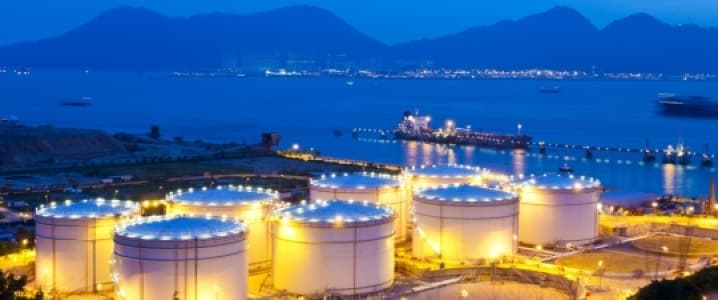Crude is drifting lower, looking rather trepidative ahead of another weekly inventory report, while dollar strength is also helping to put the kibosh on a rally. Hark, here are five things to consider in crude markets today:
1) According to Reuters, strong demand from India for heavy crude has helped lift Iraqi exports above Saudi volumes for the first time on a quarterly basis. We can see this below in our ClipperData, as Iraqi flows account for over 20 percent of total Indian crude imports for a second consecutive quarter, while Saudi flows have dropped below this threshold.
As India looks to keep up its pace of building 40 kilometers of road per day this year, its appetite for bitumen is spurring on its pursuit of heavier Iraqi oil.

2) While on the topic of India, the chart below highlights how India’s demand continues to rise, boosting its need to import from the likes of the aforementioned Iraq and Saudi Arabia. It is also looking to build its own strategic petroleum reserve (SPR), currently adding 39.1 million barrels of capacity at three locations: Visakhaptnam, Mangalore and Padur.
It is looking to add a further 91 million barrels of SPR capacity in a second phase by 2020. As the gap between India’s demand and supply is set to continue to widen, its need for energy security via an SPR is growing as well:
(Click to enlarge)
3) U.S. exports of LPG (Liquefied Petroleum Gas) have ramped up strongly in recent years, and specifically from the Gulf Coast. As a bi-product of the shale boom, the U.S. has shifted from being an LPG importer to being the world’s largest exporter (sending out ~80% propane, ~20% butane).
But just as the U.S. shale oil boom created a supply glut in the global crude market, we are seeing a similar situation play out for LPG. With Chinese demand faltering and failing to absorb new supplies, we are hearing companies are cancelling U.S. LPG loadings in July, choosing instead to incur hefty penalties (hark, $1 million per cargo).
From a ClipperData perspective, we expect loadings to come under further pressure going forward, as oversupply gives buyers the upper hand to renegotiate or even cancel their contracts – especially as global LPG spreads have shrunk to make U.S. cargoes uneconomical to Asian buyers. Hark, our ClipperData loadings from the US Gulf and Arab Gulf: Related: Why Another Oil Price Downturn Is A Distinct Possibility
(Click to enlarge)
4) A new report from the EPA projects that the U.S. will fall short of its fuel efficiency target of 54.5 miles per gallon by 2025 – driven by the changing behavior of consumers amid lower gasoline prices. Gas prices continue to drop, now down 35 of the last 36 days to $2.21/gallon – their lowest level for this time of year since 2014. Hence consumers cannot help themselves from buying gas guzzlers (aka pickup trucks, vans, and SUVs).
All is not lost, however. Both the EPA and NHTSA (National Highway Traffic Safety Administration) say that fuel standards could be met through improvements in gasoline vehicles – and not just through widespread introduction of electric or hybrid cars.
ADVERTISEMENT
(Click to enlarge)
5) Finally, the cost of decommissioning for North Sea oil-fields is set to rise over the next ten years, as an increasing number of older platforms are retired amid a lower price environment; upgrades are not a consideration at the current price point. Wood Mackenzie projects decommissioning costs to rise to 23 billion pounds by 2025.
Production in the North Sea peaked in 1999 at 2.9 million barrels per day; volumes last year dropped to 965,000 bpd, according to BP.
By Matt Smith
More Top Reads From Oilprice.com:
- Why Lithium Will See Another Price Spike This Fall
- China’s Fuel Efficiency Drive Could Upend Oil Markets
- Energy Is The Reason Europe Is Still Backing Erdogan





















